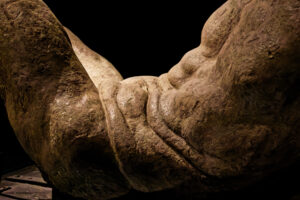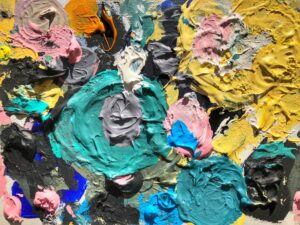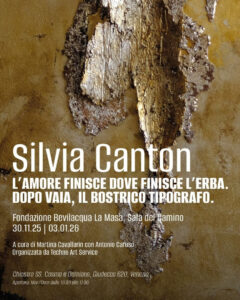Introduction
In the world of contemporary art, improvisation plays a key role in bringing to life unique and pulsating works of authentic creativity. As you explore this topic, you will realise how much improvisation can influence the creative process and what freedom it can offer artists in overcoming conventions. It is not only a method of artistic expression, but a true philosophy that invites you to look beyond the rules and embrace uncertainty. Get ready to discover how this practice can transform your understanding of modern art.
Improvisation: definition and context
Improvisation is an artistic practice that involves spontaneous creation, often without predefined planning. In this context, you can explore emotional vibrations and creative insights in the moment. These moments of freedom allow you to express yourself in unique ways, transforming the experience into a real-time work of art, reflecting your individuality and responsiveness to your surroundings.
History of improvisation in art
The history of improvisation in art is intertwined with movements such as Surrealism and Abstractionism, where artists used improvised techniques to unleash their creativity. You can see how over the decades, artists such as Jackson Pollock and John Cage incorporated improvisation into their work, breaking with traditional conventions and stimulating new forms of artistic expression.
Differences between improvisation and planning
Improvisation and planning represent two distinct approaches to art. While planning involves meticulous preparation and a defined pattern, improvisation allows you to relinquish control and embrace uncertainty. This fundamental difference offers unique experiences and results, where what emerges can surprise both you and the audience.
When considering improvisation versus planning, remember that the former is based on spontaneity and instinct, while the latter involves strategic decisions and planning. Improvisation pushes you to react and create in the moment, and can result in highly expressive and free works. In contrast, planning provides you with a structure and consistency that can be just as good, but often less open to the unexpected. Each approach has its place in contemporary art and can profoundly influence the message and experience of the work you create.
The importance of improvisation in contemporary art
Improvisation plays a crucial role in contemporary art, allowing artists to express their emotions in real time. This practice free from predetermined patterns stimulates creativity and encourages a deeper connection between the work and the audience. Artists can discover new ideas and develop their personal style through improvisation, making their works more alive and authentic.
Audience involvement
When artists improvise, they invite the audience to be part of the creative process. This direct interaction not only makes the artistic experience more dynamic, but also provides an opportunity for active participation. Your involvement transforms the enjoyment of art into a shared moment, where each individual can interpret and feel part of the work.
Spontaneity and creativity
Spontaneity is a key element of improvisation, as it allows artists to act unfiltered and generate fresh ideas. When you let creativity flow freely, you can discover new artistic avenues that would otherwise remain unexplored. This approach not only enriches your experience as a spectator, but also stimulates the growth of the artists themselves.
As you embrace spontaneity, you give yourself permission to explore the creative process without the limitations of rational thought. This freedom leads to surprisingly innovative results, exploiting the inspiration of the moment. Art then becomes an authentic reflection of emotions and ideas, creating a direct connection with the audience. In this way, spontaneity proves to be a powerful tool for the evolution of contemporary art, generating vibrant and meaningful works that capture your attention and imagination.
Improvisation techniques used by contemporary artists
In the contemporary art world, artists employ various improvisation techniques to stimulate creativity and break traditional barriers. These techniques can range from the use of spontaneous gestures to the immediate manipulation of materials. By encouraging a free and intuitive approach, improvisation becomes a fundamental tool for the discovery of new artistic forms and personal expression.
Examples of practices and methodologies
Improvisational practices include live performances, interactive installations and audiovisual works, allowing artists to engage audiences directly. You can observe how many artists incorporate improvised elements into their works, allowing the creative process itself to become part of the final work. These examples demonstrate the importance of improvisation in creating meaning and emotional connection with the audience.
Tools and media of improvisation
The tools and media used in improvisation vary widely, from the use of musical instruments to visual materials such as colours and recycled materials. You can find artists who use digital technology and software to create works in real time, while others prefer physical materials such as clay or paint. The importance of these tools lies in their ability to facilitate immediate action and spontaneity, which are essential to the improvisational process.
In the context of improvisation, modern technologies offer unique opportunities. Recording software, video and animation tools enable real-time interaction that enriches the artistic experience. You can see how contemporary artists use these means to explore complex themes and create visual and sound works that develop dynamically. In doing so, they not only explore their aesthetics, but also the very nature of art and creativity.
Improvisation as a means of conceptual exploration
Improvisation in contemporary art is a powerful tool for conceptual exploration. Through unstructured practices, you can immerse yourself in a creative flow that breaks conventions and stimulates critical thinking. This approach allows you to bring new and original ideas to life, generating cues for further reflection and connections between different art forms.
Emerging themes
In the context of improvisation, emerging themes such as identity, memory and social interaction make their way in. Personal and cultural experiences influence artistic choices, allowing for a meaningful dialogue with the audience. The improvised approach offers a platform to give voice to current and relevant issues, inviting collective reflection.
Reflections on identity and culture
Reflections on identity and culture through improvisation allow you to explore the nuances of your existence and roots. In this context, art becomes a means to confront and challenge stereotypes and prejudices. Improvisation allows you to express and rework cultural experiences, fostering a recognition of diversity and the construction of a more inclusive narrative.
This creative process invites you to reflect on the complexity of your personal and cultural identities in the face of an ever-changing world. Through improvisation, you can bring to life situations and narratives that reflect your own experiences, exploring the dialogue between tradition and modernity. Improvised performances can reveal existing tensions and possibilities for encounter, prompting a critical awareness that can foster social change. In this way, art becomes not only self-expression, but also a vehicle for cultural transformation.
Contemporary artists using improvisation
In contemporary art, many artists explore improvisation as a creative tool. Figures such as Marina Abramović and John Zorn use this technique to break traditional conventions, creating works that challenge audience expectations. You may be surprised to see how improvisation can transform not only performance, but also sculpture and painting, offering a unique and dynamic experience that invites reflection and interaction.
Case studies and analysis
By exploring case studies of contemporary artists, you can see how improvisation plays a crucial role in their work. For example, William Forsythe’s approach to contemporary dance highlights the use of improvisation as a means to challenge and revise classical forms, resulting in creations that are fresh and constantly evolving. Your analysis of these figures will provide you with a deeper understanding of their method and the impact of improvisation in the arts.
Contribution to the evolution of art
The contribution of improvisation to the evolution of art is significant, as it introduces innovation and spontaneity. You can see how this practice has opened the door to new expressive languages and artistic forms, challenging traditional categories. The creative freedom offered by improvisation allows artists to explore themes and techniques that reflect the complexities of modern life.
In particular, improvisation has facilitated dialogue between different artistic disciplines, resulting in unique collaborations and interconnections. You can see how visual artists, musicians and performers influence each other, resulting in works that capture the essence of contemporary culture. This freedom of exploration has, therefore, not only expanded the boundaries of art, but also initiated new conversations about identity, culture and perception. In this context, improvisation emerges as a driving force that continues to reshape the current artistic landscape.
Criticism and challenges related to improvisation in art
Improvisation in contemporary art brings significant criticism and challenges. Some argue that a lack of planning can lead to superficial or inconsistent results, undermining the quality of the work. Furthermore, improvised art may be perceived as less ‘serious’ than more traditional art. It is crucial to consider these views as you explore your work, recognising the tensions that improvisation can generate between creativity and artistic rigour.
Public and critical perception
Public and critical perceptions of improvisation vary widely. You want your audience to understand the value of spontaneity and artistic intuition, but you may encounter resistance. Experts may undervalue improvised works, considering them less thoughtful. It is important to communicate your artistic intentions to help your audience connect with your vision.
Limitations and opportunities
Oscar Wilde once said that ‘improvisation is the art of the moment’. Similarly, improvisation in art presents both limitations and opportunities. On the one hand, the lack of rigid structure can lead to wonderful and authentic artistic experiences, pushing you to explore new expressive frontiers. On the other hand, a lack of preparation can result in works that do not meet the expectations of audiences and critics. However, facing these challenges can prove to be an extraordinary opportunity to grow and refine your personal style.
What role does improvisation play in contemporary art?
In conclusion, improvisation plays a crucial role in contemporary art, allowing you to explore new ideas and express your creativity in unique ways. It offers you the freedom to break with convention, facilitating the emergence of spontaneous and authentic works. By embracing improvisation, you not only enrich your artistic practice, but also your way of perceiving and interacting with the world around you. In this way, improvisation becomes not just a technique, but a philosophy that can profoundly enrich your artistic experience.



